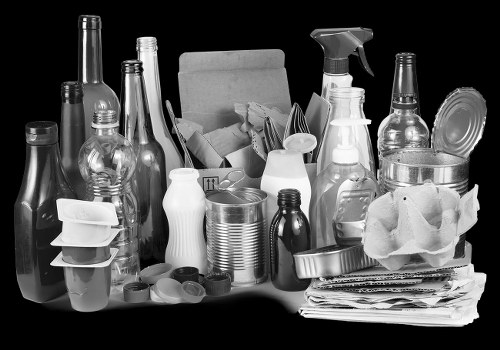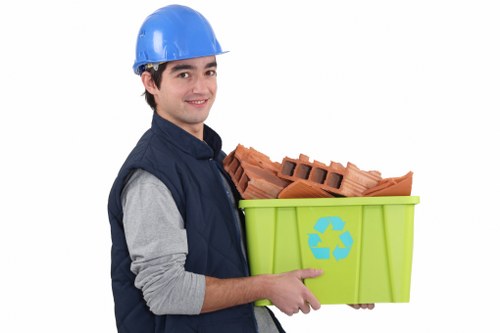Business Waste Removal in Flat Clearance

Introduction to Business Waste Removal
Effective business waste removal is crucial for maintaining a clean and efficient workspace. Whether you're managing a small office or a large commercial property, proper waste management ensures compliance with environmental regulations and promotes a sustainable business model.
Flat clearance plays a significant role in the overall waste removal process. It involves the systematic clearance of waste from flat premises, ensuring that the workspace remains clutter-free and operationally efficient.
In this article, we will explore the essentials of business waste removal in flat clearance, providing insights into best practices, benefits, and strategies to optimize your waste management system.

Understanding Flat Clearance
What is Flat Clearance?
Flat clearance refers to the process of removing waste and unwanted items from a flat or apartment, typically within a business context. This process is essential for maintaining hygiene, compliance, and the overall appearance of the workspace.
Importance of Flat Clearance in Business
Proper flat clearance ensures that businesses adhere to health and safety standards. It minimizes the risk of accidents, reduces clutter, and promotes a productive work environment.
Key Benefits:
- Enhances workplace safety
- Promotes a professional image
- Ensures compliance with local regulations
- Facilitates efficient waste management

Types of Waste in Business Settings
Common Waste Categories
Businesses generate various types of waste, each requiring specific handling and disposal methods. Understanding these categories is essential for effective waste removal.
1. General Waste
Includes everyday items such as packaging materials, paper, and kitchen waste.
2. Recyclable Waste
Materials like paper, glass, and certain plastics that can be processed and reused.
3. Hazardous Waste
Chemicals, batteries, and electronic waste that require special disposal procedures to prevent environmental contamination.

Best Practices for Business Waste Removal
Implementing an Effective Waste Management Plan
To ensure efficient business waste removal, it's essential to develop and implement a comprehensive waste management plan. This plan should outline the procedures for waste collection, segregation, storage, and disposal.
Strategies for Efficient Flat Clearance
- Regular Collection Schedule: Establish a routine for waste collection to prevent accumulation.
- Waste Segregation: Separate waste into different categories to facilitate recycling and proper disposal.
- Employee Training: Educate staff on waste management practices and the importance of maintaining a clean workspace.
- Use of Appropriate Containers: Utilize bins and containers designed for different types of waste to enhance efficiency.

Choosing the Right Waste Removal Service
Factors to Consider
Selecting a reliable waste removal service is critical for effective flat clearance. Consider the following factors when choosing a service provider:
- Experience and Expertise: Ensure the company has a proven track record in handling business waste removal.
- Compliance with Regulations: The service should adhere to local and national waste disposal laws.
- Range of Services: Look for a provider that offers comprehensive services, including recycling and hazardous waste disposal.
- Cost-Effectiveness: Compare pricing structures to find a service that fits your budget without compromising quality.
Benefits of Professional Waste Removal Services
Hiring a professional waste removal service offers numerous advantages:
- Efficiency: Professionals are equipped to handle waste removal promptly and effectively.
- Safety: Reduces the risk of accidents and ensures hazardous waste is managed safely.
- Environmental Responsibility: Promotes sustainable practices through proper waste segregation and recycling.
- Cost Savings: Minimizes potential fines and reduces the costs associated with improper waste disposal.
Implementing Sustainable Waste Practices
Adopting sustainable waste practices not only benefits the environment but also enhances your business's reputation. Here are some strategies to promote sustainability in your waste management:
1. Reduce, Reuse, Recycle
Prioritize reducing waste generation, reusing materials whenever possible, and recycling to minimize the environmental impact.
2. Composting Organic Waste
For businesses with significant organic waste, composting can be an eco-friendly disposal method.
3. Digital Transformation
Transitioning to digital documents reduces paper waste and promotes a greener office environment.
Case Study: Successful Implementation
Consider a local office that implemented a comprehensive waste management plan, resulting in a 30% reduction in waste and significant cost savings. By partnering with a professional waste removal service and educating employees on sustainable practices, the business achieved its environmental goals while enhancing operational efficiency.
Conclusion
Effective business waste removal in flat clearance is essential for maintaining a clean, safe, and sustainable workplace. By understanding the types of waste, implementing best practices, choosing the right service provider, and adopting sustainable strategies, businesses can enhance their operations and contribute positively to the environment.
Don't let waste management be an afterthought. Contact us today to optimize your business waste removal processes and ensure a clutter-free, efficient workspace.
Book your service now and take the first step towards a more sustainable and organized business environment.

